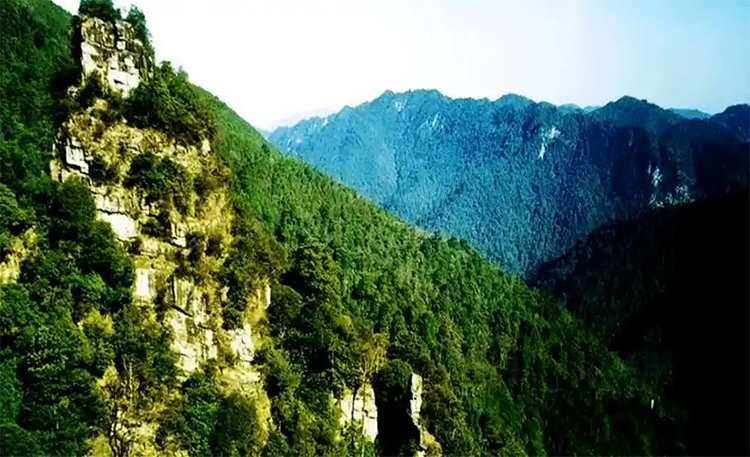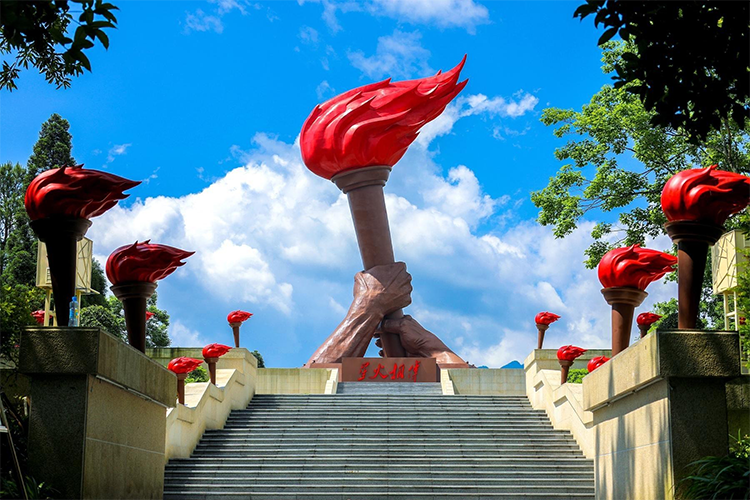Jinggangshan: Red Tourism China — Explore Revolutionary Legacy and Natural Wonders
Jinggangshan: China’s Red Revolutionary Mountain and Natural Wonderland
Jinggangshan is a unique jewel among China’s famous mountains. Known as the “cradle of the Chinese revolution” and a national 5A scenic area, it pairs a powerful revolutionary legacy with lush, oxygen-rich landscapes. Whether you come for history, nature, photography, or an educational trip, Jinggangshan delivers an inspiring, multifaceted experience.
1. Core features: A red-and-green symphony
Jinggangshan’s essence can be summarized as a place shaped by revolutionary courage and refined by natural forces. Its defining charm is the blend of “red” revolutionary heritage and “green” ecological beauty—both a red tourism landmark for patriotic education and an ecological sanctuary with high negative ion concentrations and striking geology. Here you can feel the pulse of modern Chinese history while soaking in sea-of-clouds vistas, waterfalls, and vast rhododendron blooms.
2. Deep historical significance and revolutionary atmosphere
The history of Jinggangshan marks the opening chapter of modern China. In the 1920s Mao Zedong, Zhu De, and other pioneers established the first rural revolutionary base here, igniting the long road of revolution. Walking the area, the echoes of that era remain palpable.
– Historical sites and stories: The entire mountain feels like an open-air revolutionary museum. Ciping (Cipin) is the scenic core, where Mao Zedong’s former residence and the Jinggangshan Revolutionary Museum are located. Every artifact and reconstructed scene tells stories of hardship and heroism. Under the dim light of Bajiaolou (the Octagonal Building), seminal works guiding the revolution were conceived. At Huangyangjie lookout you can almost hear the thunder of historic artillery.
– Overall atmosphere: The mood is solemn and uplifting, yet naturally integrated rather than oppressive. You will see school groups, respectful solo travelers, and relaxed locals—creating an air of reverence and peaceful reflection.

3. Spectacular natural scenery and geological wonders
Jinggangshan’s natural beauty will amaze any nature lover.
– Geology: Classic Danxia landforms form dramatic cliffs, stone columns, and peak forests—steep, rugged, and visually striking.
– Signature sights and photo spots:
– Five-Finger Peak (Wuzhifeng): Famous as the “most valuable peak in China,” its silhouette even appears on the back of the fourth series 100-yuan banknote—a must-visit landmark.
– Longtan Waterfall Group (Five-Dragon Pools): Five tiered waterfalls form a roaring cascade shrouded in mist—perfect for photography and feeling the power of nature.
– Bijia Mountain and the Ten-Mile Rhododendron Corridor: In spring, one of Asia’s largest rhododendron fields erupts in color across the slopes, a breathtaking floral spectacle.
– South Ridge (Jiangxi’s ridge) at Nanfeng side (approx. 1,484 m): A satisfying climb for hikers who want panoramic mountain views and a sense of soaring above the ranges.
4. Deep-dive experiences and activities
Jinggangshan offers much more than surface sightseeing.
– Red education programs: These are the heart of the Jinggangshan experience. Dress in period-style Red Army uniforms, retrace supply paths used by Mao and Zhu’s forces, listen to expert guides in the museum, or watch the large-scale live production “Jinggangshan” to feel the drama of history firsthand.
– Ecological exploration: With forest coverage exceeding 90%, the area is an excellent summer retreat and hiking destination. Cool summers earned Jinggangshan a spot on China’s list of famous summer mountains. Follow well-marked trails into primeval forest, breathe pure air, view waterfalls, and search for rare plants and wildlife.
– Seasonal highlights: Spring is for rhododendrons; summer for cool weather and waterfalls; autumn for cloud sea vistas; winter can bring snowy scenery reminiscent of northern China.

5. Trip planning and practical recommendations
– Suggested duration: The scenic area spans about 213.5 square kilometers with dispersed attractions. Allocate at least 2–3 days for an in-depth visit to experience both red history and natural highlights.
– Best for: Family educational trips, corporate or student study tours, photographers, and hiking enthusiasts.
– Sample itinerary: Combine Ciping (museum and former residences) with Huangyangjie, Longtan, and the main peaks (including Five-Finger Peak) into a two-day route to balance effort and highlights.
– Day vs. night: Daytime is for exploring history and nature. Ciping town becomes quiet at night—stroll the Tianjie specialty street, sample local dishes, or catch an evening performance.
6. Practical tips
– Tickets and costs: The scenic area charges a main gate ticket that usually covers most attractions for several days. Shuttle buses or environmental sightseeing buses within the park are mandatory and charged separately due to large distances. Food and lodging range from budget to upscale.
– How to get there: The most convenient public option is high-speed rail or flights to Ji’an (Jiangxi Province), then a coach to Jinggangshan City (Ciping). Inside the park, visitors must use the eco-friendly sightseeing buses between sites.
– Driving: Private cars can reach the park entrance, but access to core scenic zones generally requires switching to the park buses.
– Language and payment: Major signs are bilingual (Chinese/English). Hotels, bigger restaurants, and shops accept mobile payments (Alipay/WeChat) and international cards, while small vendors may prefer cash—carry some RMB.
– Safety and facilities: Facilities are developed with restrooms and shelters. Stay on marked trails, wear non-slip comfortable footwear, and bring rain gear and layers—mountain weather changes rapidly.

7. Local insights
– Hidden gems: Explore lesser-known hiking trails for tranquil nature away from crowds. Early mornings at Huangyangjie offer excellent chances to see dramatic seas of clouds.
– Avoid crowds: Avoid national holiday peaks (Golden Week, May Day) to skip heavy crowds. For souvenirs, compare prices along Ciping’s Tianjie street before buying.
Basic Information
– Name: Jinggangshan Mountain Scenic Area
– Address: Jinggangshan City, Ji’an, Jiangxi Province, China
– Opening hours: Main gate and park buses typically run 8:00–17:00; individual sites may vary—check daily notices.
– Price reference: Main ticket around RMB 160+; park bus around RMB 80+ (subject to official updates).

Summary
Jinggangshan is a soul-stirring journey that combines a seminal chapter of Chinese history with dramatic Danxia landforms and lush ecology. It melds education, recreation, aesthetics, and adventure—making it a must-see deep-dive stop on any China travel list.


